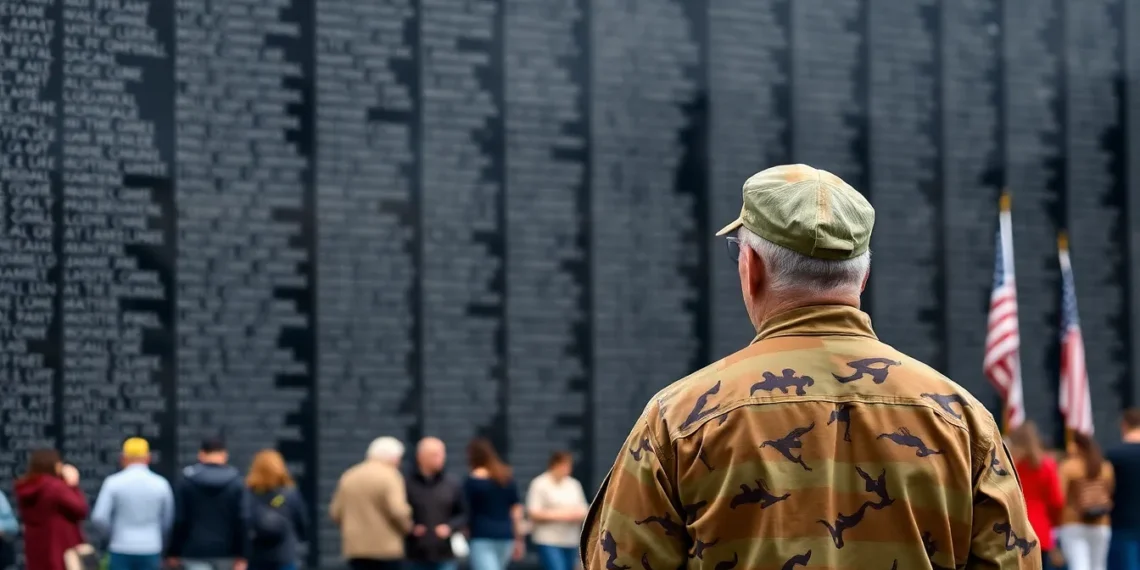The Vietnam War was a tumultuous chapter in American history, filled with bravery, heartache, and some seriously questionable fashion choices. As the nation grappled with the conflict, the human cost became a staggering reality that still resonates today. But just how many Americans lost their lives in this complex war?
Understanding the numbers isn’t just about statistics; it’s about honoring the sacrifices made and recognizing the profound impact on families and communities. With estimates ranging widely, it’s time to dive into the facts and figures that tell the story of those who served. So buckle up as we unravel the tragic toll of the Vietnam War and pay tribute to those who gave everything for their country.
Overview of the Vietnam War
Fractured by conflict, the Vietnam War raged from November 1, 1955, to April 30, 1975. Significant political tensions characterized this period, primarily fueled by the Cold War dynamics. North Vietnam, backed by communist allies, fought against South Vietnam, supported by the United States and other anti-communist nations.
Massive troop deployments and extensive military operations defined the U.S. involvement. By the peak of engagement in 1969, approximately 549,500 American service members were stationed in Vietnam. This escalation aimed to curb the spread of communism and bolster the South Vietnamese government.
Widespread protests erupted across the United States as the war continued. Citizens expressed indignation over the mounting casualties and socio-political implications. As a result, the conflict prompted deep divisions within American society, impacting public opinion significantly.
The human cost of the war resonates profoundly. Estimates indicate that around 58,220 American service members lost their lives. Casualties included not only combat deaths but also the effects of psychological trauma and physical injuries. Many veterans returned grappling with long-lasting consequences from their experiences.
In addition to the directly impacted service members, countless families and communities bore the emotional burden of grief and loss. The Vietnam War’s legacy remains etched in the nation’s collective memory, underscoring its profound impact on American history and culture. Understanding this context enables a deeper appreciation of the sacrifices made during this tumultuous era.
Understanding Casualty Figures
Analyzing casualty figures from the Vietnam War reveals the substantial loss of life and enduring effects on American society. The conflict, known for its complexity, resulted in significant military and civilian fatalities.
Military Deaths
Approximately 58,220 American service members perished during the Vietnam War. This figure represents those who lost their lives in combat, accidents, and other war-related incidents. Service members from various branches, including the Army, Navy, Air Force, and Marines, contributed to this number. The majority of military deaths occurred between 1965 and 1970, aligning with the peak of U.S. troop involvement. A large portion of these fatalities stemmed from ground combat, with many soldiers succumbing to enemy fire, landmines, or artillery barrages. Understanding these figures honors the sacrifices made by those who served and their families.
Civilian Deaths
Vietnamese civilian casualties during the war were staggering, with estimates ranging from 1 million to 2 million lives lost. These figures encompass not only deaths from direct combat but also from bombings, forced relocations, and famine caused by the war’s devastation. The scale of civilian suffering underscores the humanitarian crisis resulting from military engagement. Civilians bore the brunt of the conflict, facing destruction of homes and communities. Additionally, many survivors experienced long-term psychological and social impacts, further complicating the legacy of the war. Recognizing civilian casualties is crucial for understanding the full toll of the Vietnam War on the Vietnamese population.
Factors Contributing to Casualties
The Vietnam War’s casualties stemmed from various complex factors. Combat conditions played a crucial role, significantly affecting American losses.
Combat Conditions
Extreme combat conditions characterized the Vietnam War, leading to high casualty rates. Dense jungles and rugged terrain hindered movement and visibility. Guerrilla warfare tactics employed by North Vietnamese forces contributed to increased American vulnerability. Additionally, booby traps and landmines caused significant injuries and fatalities. The unpredictable nature of the conflict meant American troops faced constant threats. In close-quarters battles, soldiers experienced high levels of stress and danger, resulting in profound impacts on morale and effectiveness.
Political Decisions
Political decisions significantly influenced the Vietnam War’s high casualty figures. Escalation of troop deployments can be traced to strategic choices made by U.S. leadership. They aimed to counter perceived communist expansion, often disregarding ground realities. The decision to commit American forces without clear objectives led to prolonged engagement in combat. Commanders frequently faced challenges in coordinating effective responses to rapidly evolving situations on the battlefield. Consequently, the disconnect between political objectives and military execution contributed to substantial loss of life among American service members.
Impact of Casualties on American Society
The Vietnam War significantly shaped American society, with its casualties leaving a lasting imprint on public sentiment and cultural memory. Approximately 58,220 American service members lost their lives during the conflict, fostering deep divisions and widespread protests.
Public Opinion
Diverse perspectives emerged in response to the war’s staggering casualty figures. Many Americans expressed outrage over the loss of life, which ignited massive protests across the nation throughout the 1960s and early 1970s. Activists and citizens questioned the U.S. government’s military strategies and objectives, leading to a robust anti-war movement. Younger generations often joined demonstrations, driven by a sense of social justice and opposition to U.S. involvement in the conflict. Polls reflected a growing skepticism regarding military engagement, illustrating significant shifts in how Americans perceived their government and military actions.
Memorialization Efforts
Numerous memorialization efforts emerged to honor those who served and sacrificed. The Vietnam Veterans Memorial, dedicated in 1982, features the names of nearly 58,220 service members who died or went missing. This poignant structure serves as a site for reflection and remembrance, drawing visitors from across the nation. Communities often host events and ceremonies to commemorate Veterans Day and Memorial Day, emphasizing the importance of recognizing the sacrifices made. Families and organizations also create initiatives to support veterans, focusing on mental health and reintegration, acknowledging the ongoing struggles faced by many who served.







